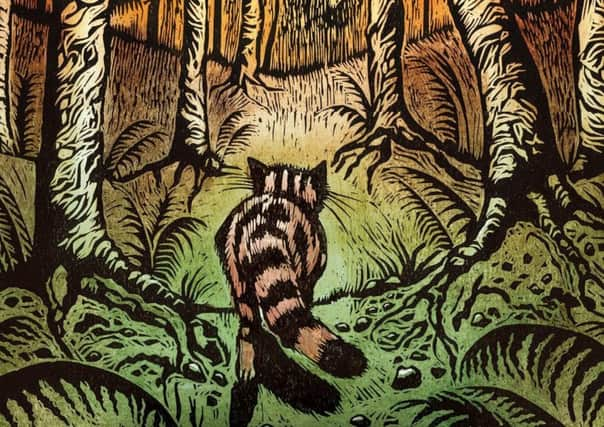Book review: Tracking The Highland Tiger: In Search Of Scottish Wildcats, by Marianne Taylor


Let me be frank. I don’t like cats. I don’t particularly care for dogs. I do like wild birds and my goldfish. The best parts of this book are actually not about wildcats at all, but the various birds which Taylor sees on her quest to see something that might possibly happily eat them. The descriptions of birds are done with an acuity and precision which is remarkable. The material on the difference between cats and dogs in terms of predation, such as stalk-and-jump versus run-them-down, the nature of being a solitary rather than a pack animal and the various amounts of flesh they need to consume is fascinating.
But there is a problem, and, for me, it is a big one, as it is one that involves language. The word “persecution” is often used of various species, not just the wildcat. That might seem to be a woken call to arms, but when it is combined with discussions of genetic purity, of the danger of interbreeding between wildcats, feral cats and domestic cats, I began to twitch.
Advertisement
Hide AdIf you were to write about someone from Arbroath having a child with someone from Sudan, would it be acceptable to say that the genetic purity of Arbroath was being “diluted” or “polluted”?
The use of words matters. It ranges far away from the ecological and environmental concerns. As Taylor boards a bus up to the pristine Highlands there is, of course, “a bevy of Glaswegians… conducting a very sweary conversation in their almost impenetrable accents”, and she suspects they are “pre-loaded” with alcohol for the trip, which makes them “rowdy”. Oh, for the joys of some sylvan area of trees, lochs and cats that haven’t mated with a lesser form of cat.
There is some intriguing material about the folklore around the Scottish wildcat, and how somewhere like Caithness takes its name from being the “province of the cat”. Whether or not a wildcat ever did take down a human being is disputable at best. Most of the anecdotes strike me as a kind of fisherman’s yarn about just how big and dangerous that catfish was. That the cat appears on some armorial crests is a neat piece of data to file away, but not enough to progress an argument.
The cultural aspect of the book is rather weak. Despite the anxiety about domesticated tabbies polluting the gene pool of their wild counterparts, it is odd not to have any mention of, say, the Irish poem attributed by some to Sedulius Scottus, Pangur Bàn, about his cat, or the Jubilate Agno of Christopher Smart, praising his cat Jeoffry.
It sometimes seems as if Taylor prefers recounting seeing a butterfly or nearly losing a data stick to engaging with what it is about cats that makes them intriguing. (Fun fact: there are no cats in the Bible, maybe because the Egyptians venerated them).
The “New Nature Writing” side of the book is a jumble of well-worn tropes. There is “cushiony heather” and “a reverie that is almost uninterrupted” and “rugged, untouched hills and shores” – though, as she has previously admitted, there is almost no wild space which does not show the marks of human habitation. The engagement with nature is “grateful and enchanted” despite the discussions of how retractable claws and sharp teeth have a very particular purpose.
Advertisement
Hide AdCompared with writers such as Robert Macfarlane and Esther Woolfson there is a lack of subtlety about how the relationship between the human, the animal and the natural are interwoven. It’s not all about the number of synonyms for the colour of the sky.
The book touches on some concerns about the re-introduction of species, lynx and wolf being the two most obvious and contentious ones. I can’t see “bring back the bear” having many takers. This shows the kind of blur that pervades the book.
Advertisement
Hide AdWere a species to be reintroduced to parts of rural Scotland, it would be a human-made intervention. Though I appreciate that part of her argument is that we owe a kind of debt to species that have become extinct, it nevertheless remains that such schemes are as much part of the Anthropocene as plastic on beaches or cloned sheep.
In a very strange manner the whole premise of the book is marred by a kind of ego: it is not enough to register that wildcats exist; it is that I have to see one with my own eyes. I would rather that the cat was left to be a cat (regardless of parentage). The intrusive self – and the use of the present tense compounds this – makes it seem to lack self-awareness. - Stuart Kelly
Tracking The Highland Tiger: In Search Of Scottish Wildcats, by Marianne Taylor, Bloomsbury, £16.99